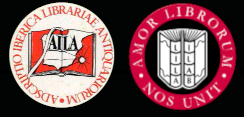


Home |
Temáticas |
Catálogos |
Pedidos |
  |  |
|||||||
|

|
RUGENDAS. (Johann Moritz) HABITANTE DE GOYAS, QUADRO A ÓLEO PINTADO SOBRE MADEIRA. |
|
|
Clique nas imagens para aumentar. BALLO. (Biaggio) MANUSCRITO - SÉCULO XVIII - EPITALAMIO NELLE NOZE DI CARLO BORBONE RE DELLE DUE SICILIE E DI MARIA AMALIA WALBURGAFiglia del Serenissimo Federico Augusto di Sassonia Re di Polonia. [1738]. De 21,2x14,3 cm. Com 10 fólios. Encadernação inteira de pele com elaborados ferros a ouro nas pastas compostos por uma sucessão de três esquadrias muito ornamentadas, a exterior em toda a sua extensão e as duas interiores, nos cantos. Iluastrado com duas belíssimas iniciais iluminadas, nas primeiras linhas de cada um dos poemas. Exemplar com desgastes na encadernação em especial na lombada, que apresenta uma etiqueta de biblioteca com o número 1827 e com ex libris armoriado de Enrique F. Gutierrez-Roig. Obra poética comemorativa do casamento do Rei de Nápoles e da Sicília, constituída por um poema longo no género de Silva, que começa: Sebeto, eccomi pronto e mais um soneto à Rainha de Espanha, Isabel Farnese: Preparati le Trombe, ò Fama altera. Carlos de Borbon filho dos Reis de Espanha Filipe V e Isabel Farnese (a quem é dedicado o soneto desta obra) subiu ao trono, em 1735, depois das vitórias da Espanha na Guerra da Sucessão da Polónia, em 1734. Foi coroado em Nápoles a 10 de Maio de 1734 e na Catedral de Palermo na Sicília em 3 de Julho de 1735. Os seus direitos foram reconhecidos pelo tratado de 1738 que pôs fim à guerra. Carlos era cunhado da Infanta Maria Bárbara, que se casou com o seu meio irmão Fernando VII e era meio irmão da Infanta Mariana Vitória que se casou com o Rei D. José de Portugal, o que não evitou que entrasse em guerra com Portugal, em 1762. Posteriormente Carlos de Borbon tornou-se Rei de Espanha, com o nome de Carlos III, pelo falecimento de seu pai, em 1759 e reinou até 1788, tendo abdicado do trono do Reino das duas Sicílias a favor do seu segundo filho, Fernando.
Copy with signs of wear on the binding in particular on the spine. Bears a library label with the number 1827 and with armorial ex libris from Enrique F. Gutierrez-Roig. A poetic work commemorating the marriage of the King of Naples and Sicily, consisting of a long poem in the genre of Silva, which begins: Sebeto, eccomi pronto and another sonnet to the Queen of Spain, Isabel Farnese: Preparati le Trombe, ò Fama altera. Charles de Borbon son of the Kings of Spain Philip V and Isabella Farnese (to whom the sonnet in this work is dedicated) ascended the throne in 1735 after Spain's victories in the War of Succession in Poland in 1734. He was crowned in Naples on 10 May 1734 and in Palermo Cathedral in Sicily on 3 July 1735. His rights were recognised by the treaty of 1738 which ended the war. Charles was the brother-in-law of the Infanta Maria Barbara, who married her half-brother Ferdinand VII and was half-brother to the Infanta Mariana Victoria who married King Joseph of Portugal, which did not prevent him going to war with Portugal in 1762. Charles de Borbon subsequently became King of Spain, under the name of Charles III, on the death of his father in 1759 and reigned until 1788, having abdicated the throne of the Kingdom of the Two Sicilies in favour of his second son, Ferdinand. The Poet's celebrated event is his marriage to the daughter of the King of Poland, which took place by proxy at Desden in May 1738, his wife, Maria Amalia of Saxony, having arrived in the Naples territory on 19 June 1738. Referência: 2208PG004
Local: M-10-D-51 Caixa de sugestões A sua opinião é importante para nós. Se encontrou um preço incorrecto, um erro ou um problema técnico nesta página, por favor avise-nos. 
|
Pesquisa Simples




|
||
 |
|||
|